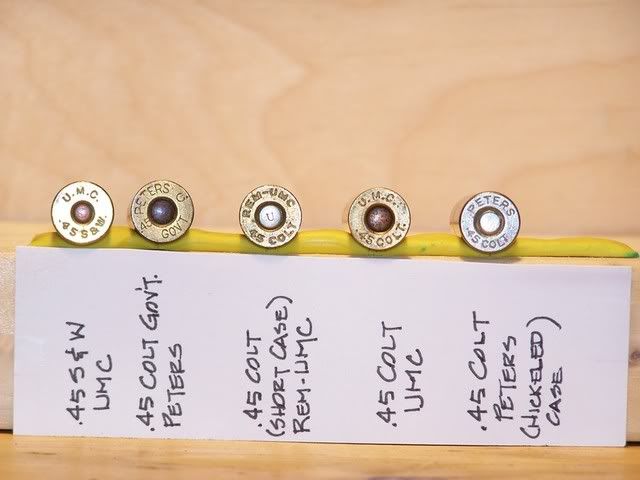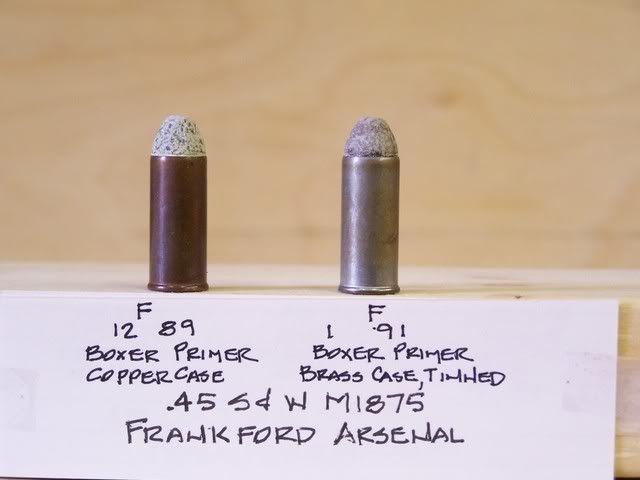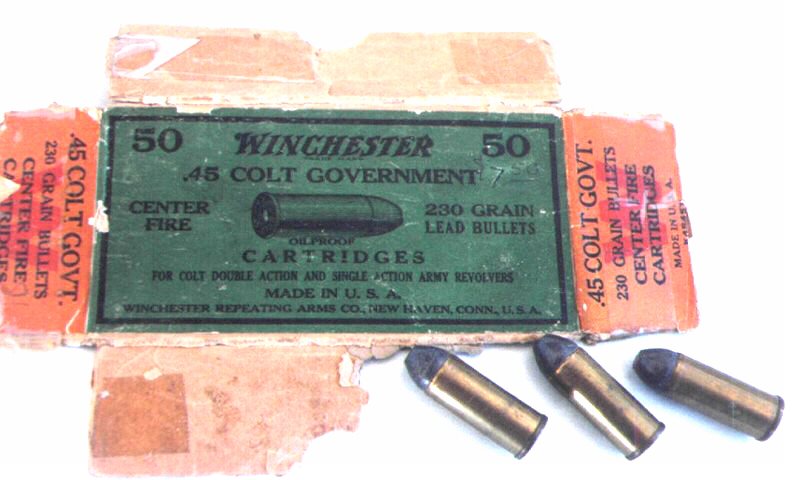OK, first, I have seen the term ".45 Army" used, even though AFAIK there was never a headstamp reading that. Again, AFAIK, it was intended to refer to the ".45 Gov't" or the cartridge usable in both the S&W Schofield and the Colt M1873 SAA. In deference to others, I will drop the ".45 Army" term and use ".45 Gov't" hereafter.
Guys, think about the chronology for a minute. The Army adopted the .45 Schofield, which was based on the S&W Model No. 3, in 1875. Up to that point, S&W had never made a .45 revolver, so there was no ammunition designated ".45 S&W". Only a few First Model Schofields were sold on the commercial market, so I seems unlikely that any ammunition company would make ammunition for them. Some 650 of the Second Model (1876) were sold commercially, so it is possible that ammunition was made. But only when the Schofields were sold off by the Army did commercial ammunition become available, at least in any quantity. That is the ammunition variously headstamped ".45 Colt", ".45 C. Gov't", and "45 S&W". I have not seen any of those cartridges that would not fit (6 rounds) in a Colt SAA.
The question is whether there was a ".45 S&W" that was different dimensionally from the ".45 Gov't". I repeat, I can find no evidence of such a cartridge. I am not talking about headstamps or box markings or someone's magazine article. I am talking about the cartridges themselves.
As I understand, the cartridge you call the .45 S&W is supposed to be different from the .45 FA production, .45 Gov't or .45 C. Gov't in having a larger rim that will not allow six rounds to be loaded into an SAA. If you have such cartridges, please give the measurements and the headstamp and, if possible, the date of manufacture.
I don't talk headstamps or box labels. I talk dimensions AND whether the actual cartridges will fit, six up, in a Colt SAA.
Jim









.gif)
